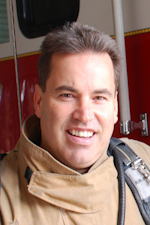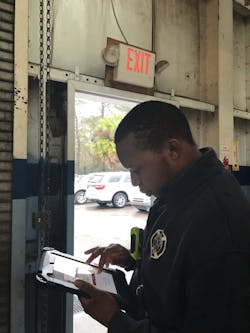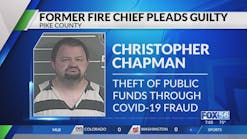Community Risk Reduction: What Is a Fire Code?
“My building already has two exits. I don’t understand why I must have a third.”
Often when dealing with fire codes, people see them as something to dread or as another restrictive hassle that’s overly cautious and excessive. Some even might view them as a form of government overreach and means of control or profit. These perceptions can inhibit compliance and minimization of hazards to life safety. This is where community risk reduction (CRR) comes in.
What a code truly is
In previous columns, I encouraged fire departments to view themselves as more than a local government service that responds to random acts of misfortune and instead as a paramilitary organization that protects the doorsteps of America and fights against a weapon of mass destruction: fire. Within the paramilitary context, I equate those who function in CRR to military intelligence, working in the community to gather intelligence on risks, briefing their commanders for development of a better battle plan, and reducing risks by educating the community and winning hearts and minds.
Although the process for a fire code to be adopted and placed into print is complex, its roots come from a tragedy from which a lesson(s) was learned. Understanding this is essential to achieving this mission of educating the community and promoting buy-in and support (winning of hearts and minds).
A basic introduction into a subject area often is referred to as “Lesson 101.” If you peruse academic curriculum, you will find that most basic and required courses for new students include “101” in their title, such as English 101 and Math 101. The same applies to fire codes. NFPA 101 Life Safety Code, the roots of which grew from a tragedy, was the beginning of a new approach to fire safety that also broadened NFPA’s scope. It’s the first lesson in understanding the importance of knowing what a code truly is, why it is and what it represents.
Although NFPA’s first codes dealt with the building itself, such as sprinkler and electrical standards, NFPA 101 (originally called the Building Exits Code) was the first code that dealt with people, or life safety. It originated from a 1911 tragedy in New York City in a building that was made of concrete, iron and steel. Although the building, the Asch Building, was described as “fire-proof” and met the fire code of the time, it would be the site of a fire that was so deadly that, according to NFPA’s Angelo Verzoni, in his March 2024 article, “The Lasting Legacy of the Triangle Shirtwaist Factory Fire,” it became “the impetus for the creation of one of the most recognized safety codes around the world.”
A fiasco
The story of the Triangle Shirtwaist Factory Fire and those of similar calamities are must-reads for not only those who are involved in CRR but, much like the history of the Dalmatian and Maltese Cross, for the historic lessons that they provide for all those who are in the fire service.
The Triangle Shirtwaist Factory Fire was a perfect storm of politics, codes, ignorance, indifference and human reaction. Details of the story go well beyond the word limitations of this column, so I will summarize some main points as they apply to CRR’s mission of educating the public and the winning of hearts and minds.
Lack of alarm. The fire broke out on the eighth floor. Workers on that floor were able to alert those who were on the 10th floor but were unable to reach those who were directly above the fire on the ninth floor. Workers on the ninth floor were alerted to the fire only when they saw flames reaching up from below through their windows.
Lack of exits. Because of square footage, the building required three exits. However, because of the liberal ambiguity of the code at the time, the building only had two stairwell exits, with a fire escape that only reached the second story allowed to account for the third exit. The two elevators that served the building became overloaded and stopped working during the fire.
Blocked exits. Both stairwells were unlit and narrow. Exit doors opened inward. In one stairwell, the exit was locked; the other was obstructed, which slowed egress. In both cases, the stairwells became bottlenecked with panicked workers. The fire escape collapsed under the weight of those who were escaping.
Lack of preparedness. Although fire drills were recommended by the fire code at the time and by the inspector who conducted the most recent fire inspection, none ever was conducted. The fabrics from the shirtwaist material that covered the floor and filled wastebins hadn’t been emptied in two months. The fire hose that was connected to the standpipe wasn’t operational because the hose was rotted and a valve was rusted.
Indifference. It was well known that FDNY’s rescue capabilities extended only as high as its ladders, which at the time only reached the sixth floor. Despite warnings from then-FDNY Fire Chief Edward Croker, the Asch Building and similar buildings still were built without sprinkler systems. The Asch Building’s floors and window sills were made of wood instead of stone and metal, as would have been required had the building been 15 feet taller.
In the end, panic ensued, as those who could find no other way out because of the overcrowding in the dark, narrow and obstructed stairwells and the collapsed fire escape were forced to jump to their death. In the end, 146 people, who were mostly young immigrant women between the ages of 14 and 23, died in the fire, as helpless bystanders watched from
the streets below.
A CRR mission
How can a fire that was brought under control in less than 18 minutes claim so many victims? As noted above, the building was made of concrete, metal and iron, none of which will burn. What led to the deaths was mostly what was inside the “fire-proof” building: people and combustibles. The warnings that result from the death of these victims and of thousands of others in similar tragedies are found on the pages of a fire code book.
Although not all CRR personnel have an additional duty as a fire inspector, they still can play a major role in the adoption and compliance of fire codes. Essentially, a fire code is a law and the will of the people. The public at large ultimately decides whether a code is needed (adopted) and to what level it will be enforced. However, the public doesn’t know what it doesn’t know until informed and educated. That’s the mission of CRR.
Although experts and professionals across the trades conform words into the technicality of a code, within those words are the voices of those who were lost in a tragedy, such as the victims of the Triangle Shirtwaist Factory Fire. CRR personnel must win the hearts and minds of communities by informing and educating the public on the purpose and reasoning behind the technical writing of a code, by telling the stories of those whose death brought about that code, and by explaining why it’s needed and the importance of adherence and enforcement. CRR personnel must inform and educate the public that a code isn’t a restrictive, overly cautious and excessive hassle but, in fact, a lesson to keep history from repeating itself.
So, when asked why a building requires an additional third exit, you can provide an education that’s more likely to reduce risk through understanding and compliance, rather than stating, “Because the code says so.”
CRR personnel should read about the fires of the Triangle Shirtwaist Factory, the Cocoanut Grove nightclub, the Beverly Hills Supper Club, and the Station nightclub to study and learn not only how those fires resulted in codes that we use today but also the common threads in those fires that extend to the present time.
It’s our responsibility as fire service professionals who are dedicated to the life safety of our communities to hear those voices and tell their stories. By doing so, we not only will reduce risk and save lives but remember and honor those who paid the ultimate price to teach us the lessons that we need to prevent such tragedies from happening again.
So read, learn and study. Don’t let them have died in vain.

Daniel Byrne
DANIEL BYRNE is a community support officer for the Burton Fire District, Beaufort County, SC, and a retired assistant fire chief of training for the Georgia Air National Guard 165th Fire Department. A third-generation firefighter, he holds an associate degree and a bachelor’s degree in fire science as well as a master’s degree in public administration and disaster management. Byrne is an alumnus of the National Fire Academy. He received state and local awards for public relations and educational programs as well as community partnerships and served as a conference presenter and keynote speaker.






